Filter by
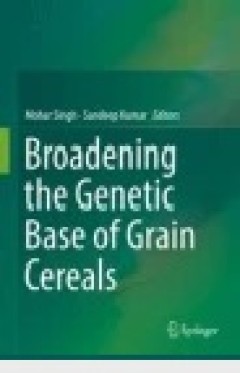
Broadening the Genetic Base of Grain Cereals
This book offers comprehensive coverage of important grain cereals including their origin and distribution, crop gene pool, level of diversity, production constraints, traits of importance for genetic base widening, crop improvement methodologies, genome mapping, genomics for breeding, and future strategies. The chapters, contributed by eminent crop researchers from around the world, provide ra…
- Edition
- -
- ISBN/ISSN
- 978-81-322-3613-9
- Collation
- -
- Series Title
- -
- Call Number
- 630.2

Amaranthus: A Promising Crop of Future
This book serves the larger community of plant researchers working on the taxonomy, species delimitation, phylogeny, and biogeography of pseudo-cereals, with a special emphasis on amaranths. It also provides extensive information on the nutritive value of underutilized pseudo-cereals, the goal being to broaden the vegetable list. Amaranthus is a cosmopolitan genus of annual or short-lived pe…
- Edition
- Ed. 1
- ISBN/ISSN
- 978-981-10-1469-7
- Collation
- IX, 208
- Series Title
- -
- Call Number
- 630 DAS a
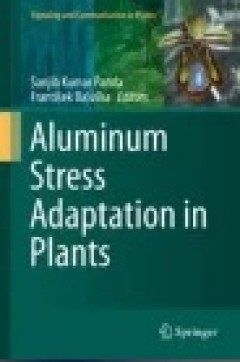
Aluminum Stress Adaptation in Plants
This book is an overview of our current understanding of aluminium toxicity and tolerance in plants. It covers all relevant aspects from molecular and cellular biology, to genetic approaches, root biology and plant physiology. The contribution of arbuscular mycorrhizal fungi to alleviating aluminium toxicity is also discussed. Over 40% of total agricultural land resources are acidic in nature, …
- Edition
- Ed. 1
- ISBN/ISSN
- 978-3-319-19968-9
- Collation
- IX, 274
- Series Title
- Signaling and Communication in Plants
- Call Number
- 630 ALU a

Alternaria Diseases of Crucifers: Biology, Ecology and Disease Management
This book deals with the various aspects viz., the disease, geographical distribution, symptoms on different hosts, host range, yield losses, and disease assessment method, while detailed description on pathogen include taxonomic position, phylogeny, variability, sporulation, perpetuation, and spore germination, host-parasite interactions in the form of seed infection, disease cycle, process of…
- Edition
- Ed. 1
- ISBN/ISSN
- 978-981-10-0021-8
- Collation
- XXXVII, 299
- Series Title
- -
- Call Number
- 630 SAH a
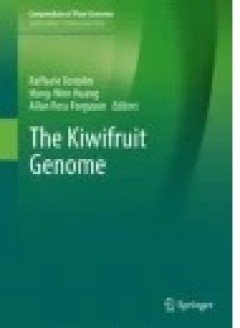
The Kiwifruit Genome
The book offers a valuable reference guide for taxonomists, geneticists and horticulturists. Further, since information gained from the genome sequence is extraordinarily useful in assessing the breeding value of individuals based on whole-genome scans, it will especially benefit plant breeders. Accordingly, chapters are included that focus on gene introgression from wild relatives and genome-b…
- Edition
- -
- ISBN/ISSN
- 978-3-319-32274-2
- Collation
- XV, 269
- Series Title
- Compendium of Plant Genomes
- Call Number
- -
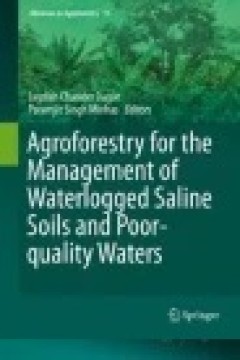
Agroforestry for the Management of Waterlogged Saline Soils and Poor-Quality …
Land degradation caused by salinity and waterlogging is a global problem afflicting about one billion hectares and endangering the food security of at least 75 countries. Since the social, economic and environmental costs of on and/off-farm reclamation techniques are high, agroforestry is now emerging as a potential tool, not only for arresting salinity and waterlogging, but also for other envi…
- Edition
- Ed. 1
- ISBN/ISSN
- 978-81-322-2659-8
- Collation
- X, 210
- Series Title
- Advances in Agroforestry
- Call Number
- 630 AGR a
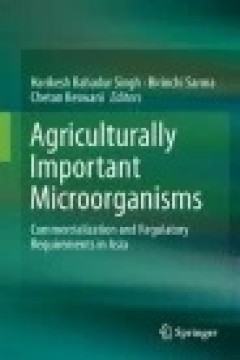
Agriculturally Important Microorganisms: Commercialization and Regulatory Req…
The main focus of this book is to survey the current status of research, development and use of agriculturally important microorganisms in Asian countries and develop a strategy for addressing critical issues various policy constraints due to which bio-pesticides have found limited applications. In this book the editors have tried to develop a consensus on issues of such as quality requireme…
- Edition
- Ed. 1
- ISBN/ISSN
- 978-981-10-2576-1
- Collation
- XVII, 305
- Series Title
- -
- Call Number
- 630 AGR a
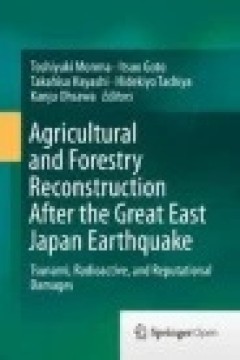
Agricultural and Forestry Reconstruction After the Great East Japan Earthquak…
This book summarizes the results of 3 years of agricultural and forestry reconstructive efforts and applied research conducted directly in the affected areas of Fukushima following the Great East Japan Earthquake. It describes fast and effective revival methods and technologies from tsunami and radiation damages, demonstrated through the collaborative efforts of researchers, students, local far…
- Edition
- Ed. 1
- ISBN/ISSN
- 978-4-431-55558-2
- Collation
- XVII, 264
- Series Title
- -
- Call Number
- 536.33 AGR a
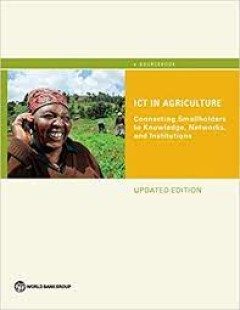
ICT in Agriculture : Connecting Smallholders to Knowledge, Networks, and Inst…
Information and communication technologies (ICTs) have always mattered in agriculture. Ever since people have grown crops, raised livestock, and caught fish, they have sought information from one another. What is the most effective planting strategy on steep slopes? Where can I buy the improved seed or feed this year? How can I acquire a land title? Who is paying the highest price at the market…
- Edition
- -
- ISBN/ISSN
- -
- Collation
- -
- Series Title
- -
- Call Number
- 630 ICT
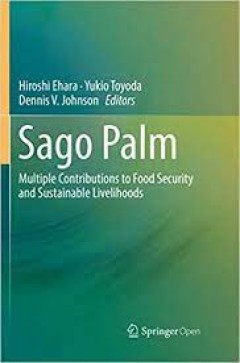
Sago Palm : Multiple Contributions to Food Security and Sustainable Livelihoods
This book addresses a wide variety of events and technologies concerning the sago palm, ranging from its botanical characteristics, culture and use to social conditions in the places where it is grown, in order to provide a record of research findings and to benefit society. It discusses various subjects, including the sago palm and related species; differentiation of species of starch-producin…
- Edition
- -
- ISBN/ISSN
- 978-981-10-5269-9
- Collation
- -
- Series Title
- -
- Call Number
- 630 SAG
 Computer Science, Information & General Works
Computer Science, Information & General Works  Philosophy & Psychology
Philosophy & Psychology  Religion
Religion  Social Sciences
Social Sciences  Language
Language  Pure Science
Pure Science  Applied Sciences
Applied Sciences  Art & Recreation
Art & Recreation  Literature
Literature  History & Geography
History & Geography